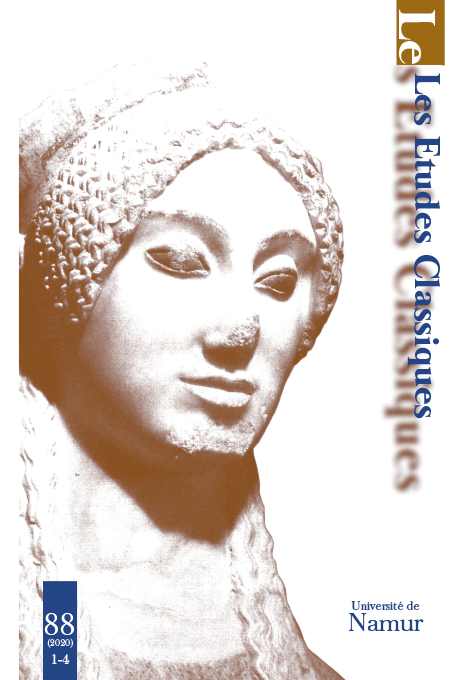 previous article in this issue previous article in this issue | next article in this issue  |

Preview first page |
Document Details : Title: Terita lux finit venientis Vespere nonas Subtitle: An Extract from Fraccus' Sacri Fasti Author(s): NELIS, Tilke Journal: Les Études Classiques Volume: 84 Issue: 1-4 Date: 2016 Pages: 351-362 DOI: 10.2143/LEC.84.1.3290560 Abstract : This paper focusses on an extract from the Sacri Fasti of Ambrosius Novidius Fraccus, an Italian humanist of the sixteenth century who wrote several poetical works. The nickname «Novidius» is derived from novus and Ovidius, and indicates a desire to compete with the ancient poet. The Sacri Fasti (printed in 1547 in Rome) follow the example of the ancient Fasti, but they are written within a Christian framework. During the Renaissance, calendar poetry turned out to be a specific genre, which became famous through poets such as Ludovicus Lazzarellus and Baptista Mantuanus. We will analyse a passage about Saint Agatha (celebrated on February, 5th), enlightening its Ovidian characteristics and digging out pagan features as well as references to previous Neo-Latin poets. Furthermore, we will attempt to show that the Golden Legend of the theologian Jacobus a Voragine (13th century), printed for the first time in 1470, was the major source for the subject treated by Fraccus. Cet article examine un extrait des Sacri Fasti d’Ambrosius Novidius Fraccus, humaniste italien du seizième siècle et auteur de plusieurs œuvres poétiques. Le surnom «Novidius», contraction de novus et Ovidius, indique une volonté de rivaliser avec le poète antique. Les Sacri Fasti (imprimés en 1547 à Rome) reprennent la forme des Fasti antiques, mais en christianisent le contenu. Il y eut, à la Renaissance, un véritable genre de poésie calendaire, que les noms de Ludovicus Lazzarellus et Baptista Mantuanus ont rendu célèbre. Notre étude porte sur le passage concernant sainte Agathe (fêtée le 5 février). Nous en déterminons, d’une part, le caractère ovidien et nous analysons, d’autre part, les traces païennes et les références aux prédécesseurs néo-latins. Nous essayons en outre de démontrer que la Légende dorée du théologien Jacques de Voragine (XIIIe s.), imprimée pour la première fois en 1470, constituait la source majeure pour la légende traitée par Fraccus. |
 |


